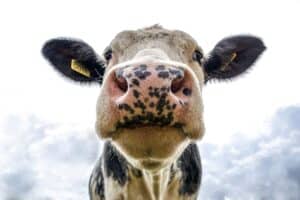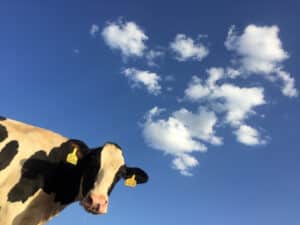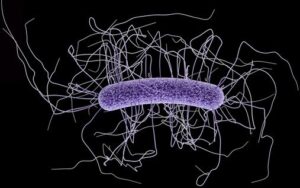by Lisa R. Tager, Ph.D.
Dairy Nutritional Technical Specialist
The winter chill is finally here in the Northeast U.S. and it is time for producers to keep an eye out for winter dysentery in their herds. From now until Spring, we’ll all be doing our best to make sure the herds we work with don’t fall prey to an outbreak of this menacing disease. Winter dysentery is characterized by a sudden onset of diarrhea that can be green to black in color and may contain fresh blood. Many cows don’t drop in DMI when they are about to break with dysentery, so we often don’t know there is a problem until the symptoms of diarrhea, dehydration, and sometimes respiratory issues, present themselves.
While winter dysentery is often not fatal, it does cause high morbidity in herds with anywhere between 5-30% loss in milk production. With therapeutic treatments, cows recover in one or two weeks. However, by then, the losses in milk are substantial and most cows will not recover back to normal yields during the current lactation. This makes winter dysentery one of the most financially disastrous diseases that a dairyman can be faced with in the winter. The good news is that with a little diligence and awareness, the producer can play a big role in keeping Winter dysentery from affecting their herd this season.
Researchers are still not 100% sure what causes winter dysentery, but much of the recent research points to Coronavirus as the main culprit.
Unfortunately, herds struggling with Bovine Viral Diarrhea Virus (BVDV), Coccidiosis, Salmonella, and even E. coli can also display symptoms very similar to those caused by viral dysentery, particularly in the cold and stressful Winter months. Often, these pathogens weaken the animal’s immune system, opening them up to an outbreak of Coronavirus. Therefore, producers should consider any of these pathogens as a possible threat to production in herds and take necessary steps to avoid an outbreak.
A little bit of good management can go a long way in preventing dysentery this winter. There is an experimental Coronavirus vaccine, but it is not proven 100% effective yet, so your best bet will be to practice good hygiene and management through the cold months. Keeping feed and water troughs, stalls, your parlor, and your employees clean and disinfected is the best way to avoid an outbreak of dysentery. Fecal contamination of feed and water is the number one cause of outbreaks on a farm. Also, it is important that any animal coming to your facility be quarantined and certified tested.
Unfortunately, sometimes even the best management cannot keep winter dysentery at bay. Therefore, it is also a good idea to consider nutritional options for avoiding or treating winter dysentery. Feed ingredients, such as Hilyses hydrolyzed yeast, which contain mannan oligosaccharides (MOS), free mannose sugar, and beta-glucans from the yeast cell wall, are an important addition to the dairy cow diet for protecting against winter dysentery. The presence of MOS in the diet acts as a prebiotic and helps maintain and balance healthy gut microbes while free mannose helps to bind bacterial pathogens like Salmonella and E. coli. The beta- glucans provided by Hilyses not only help lower the effects of any mycotoxin challenges present in the gut, but also help to stimulate the immune system in order to fight off winter dysentery before it starts.
Hilyses can also work as a treatment for winter dysentery at a double dosage, particularly if the symptoms are being caused by Salmonella or E. coli. Even if your winter dysentery is viral, the immune stimulation and gut microbe effects of Hilyses will help your herd get through the outbreak and on the mend quickly. Best of all, because of Hilyses’ unique manufacturing process, we have verified that it has a higher amount of MOS, mannose, and beta-glucans than most other products on the market, so you can be sure that it will provide you with the best preventative or treatment for winter dysentery in your herd.
Remember, good management and hygiene on your farm will be the best way to avoid winter dysentery this season. However, even the best producers sometimes cannot keep winter dysentery away when temperatures get cold and animals become stressed. Adding “nutritional insurance” to your diet, such as Hilyses hydrolyzed yeast, will keep your cows protected and producing through the winter months.



